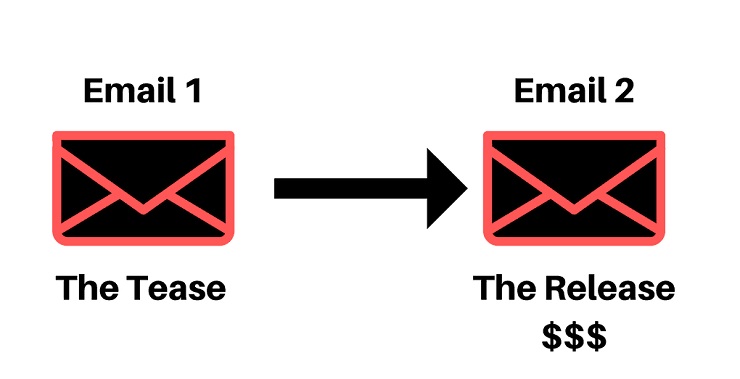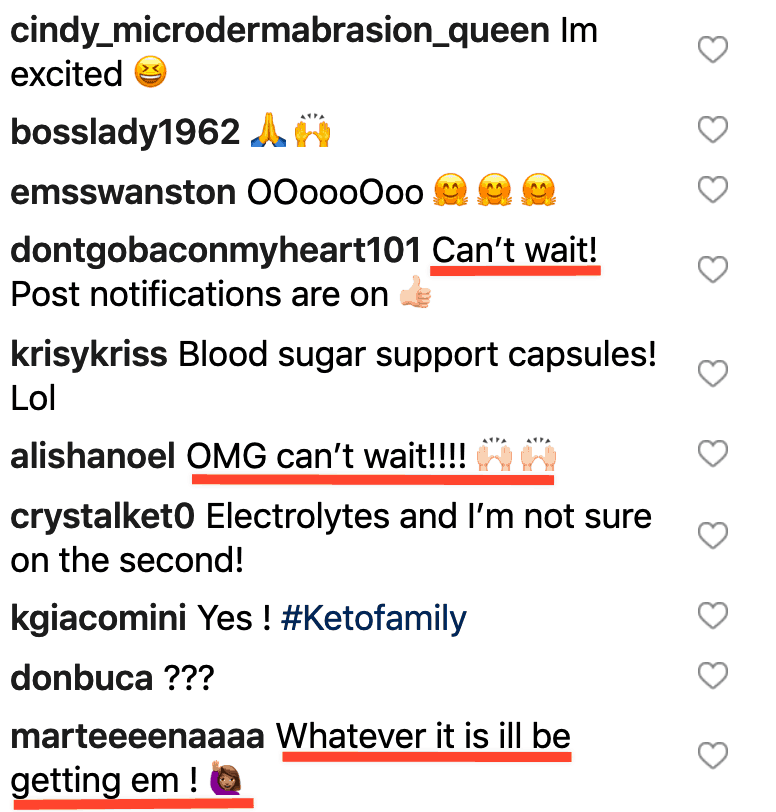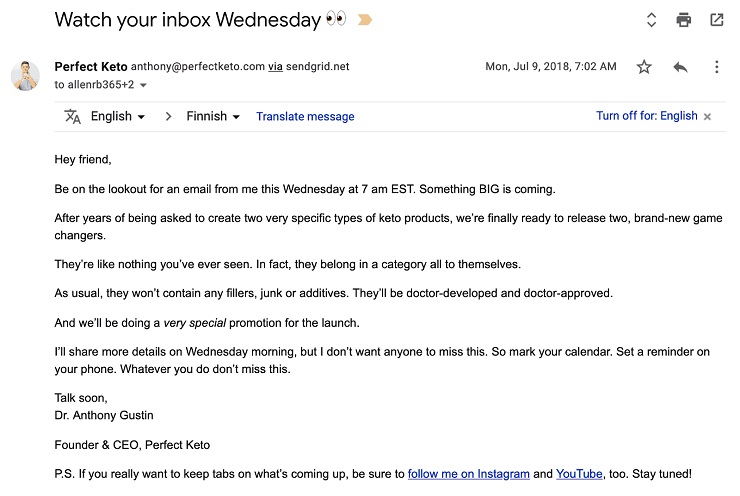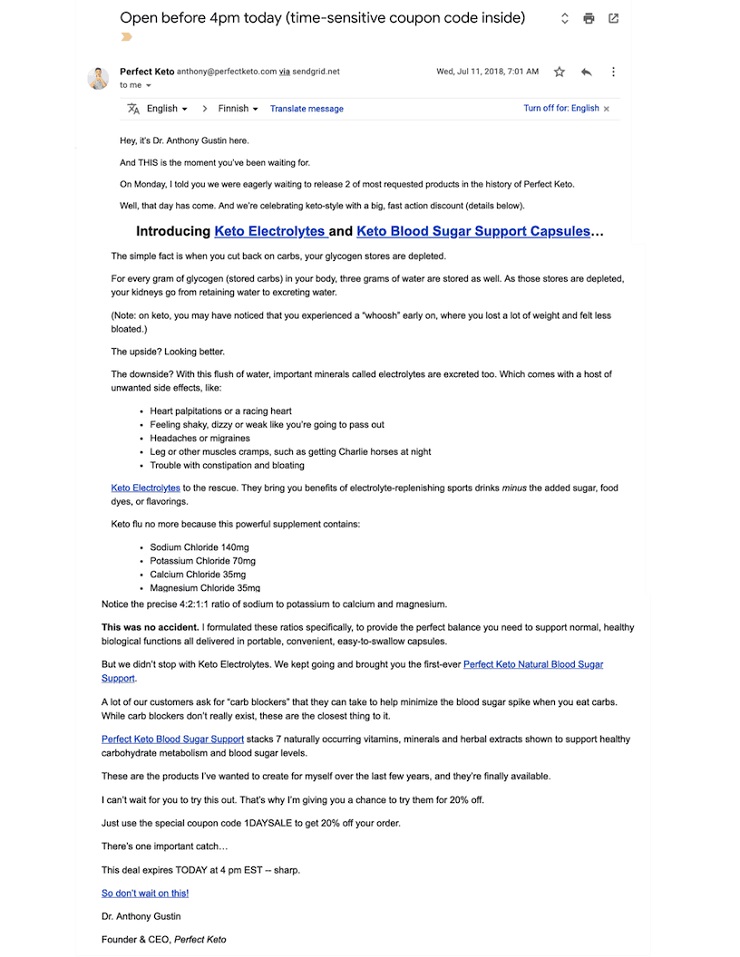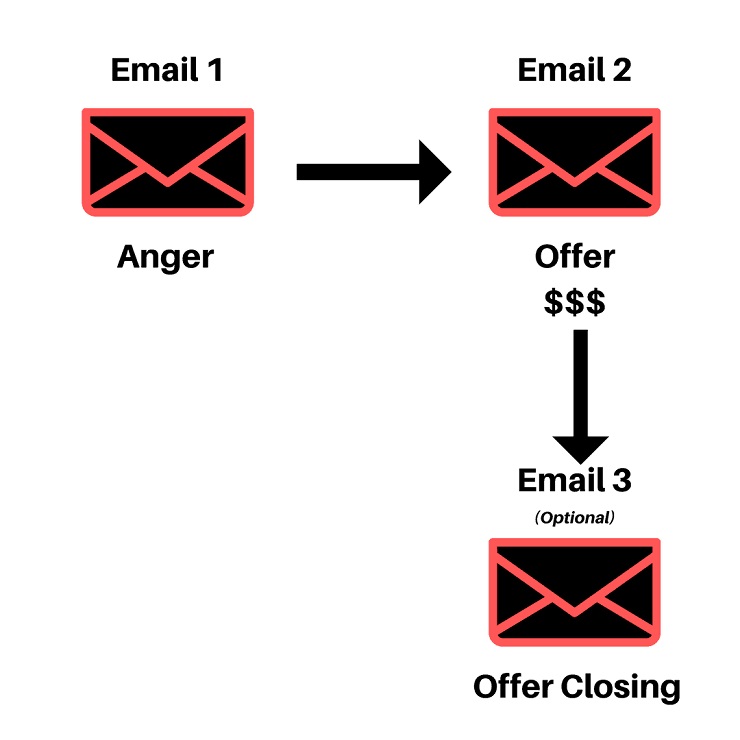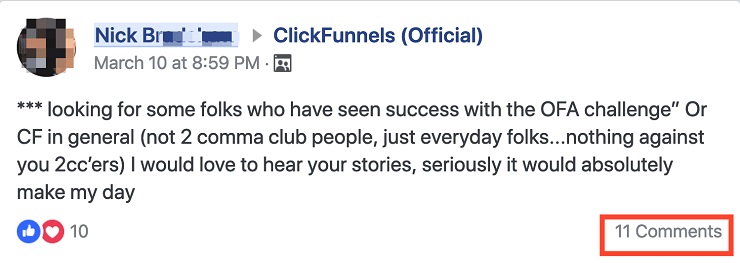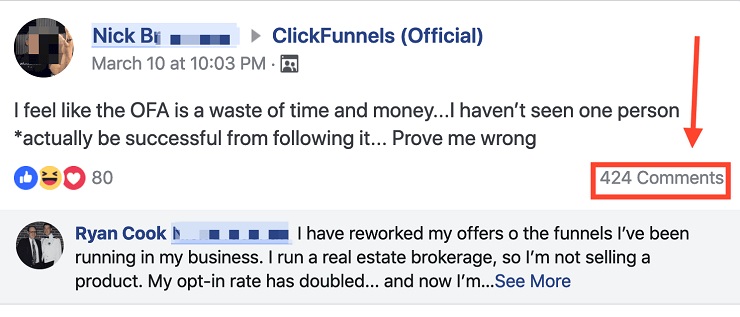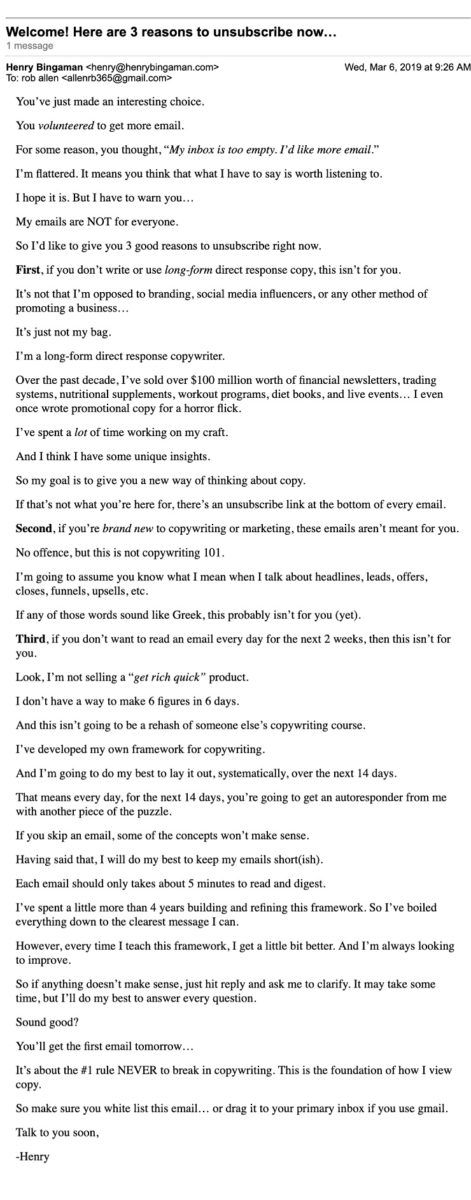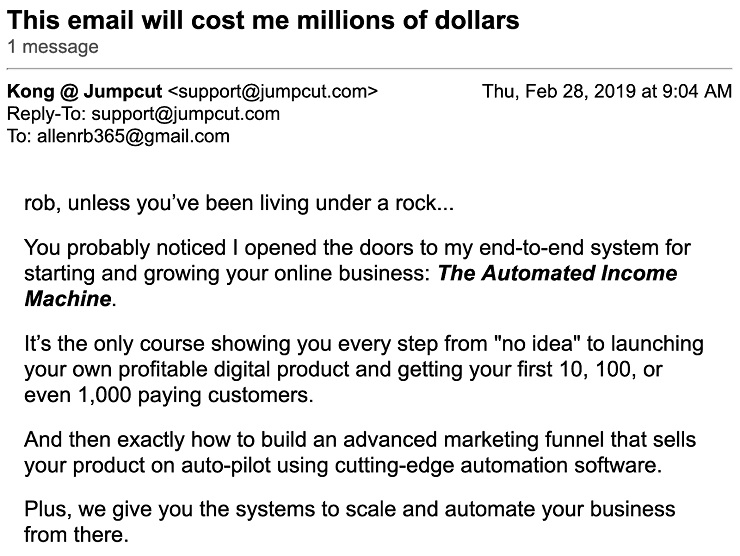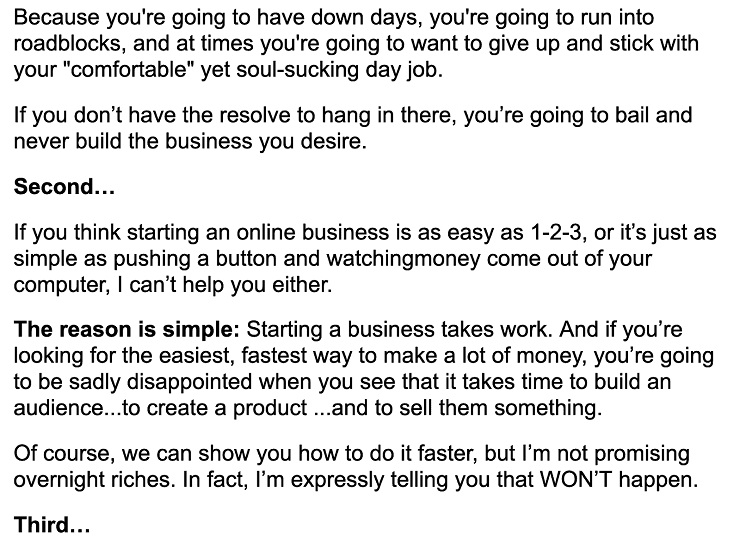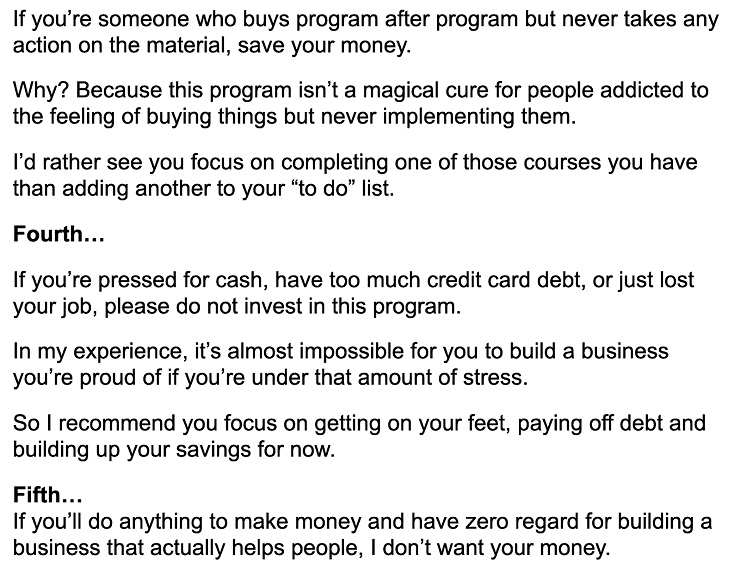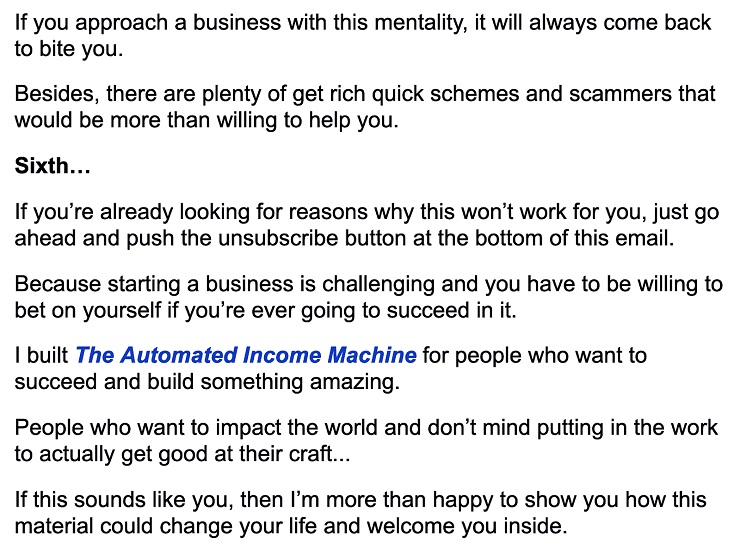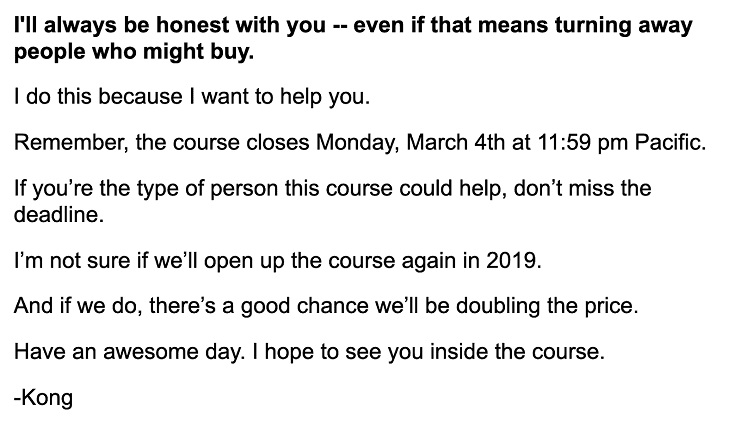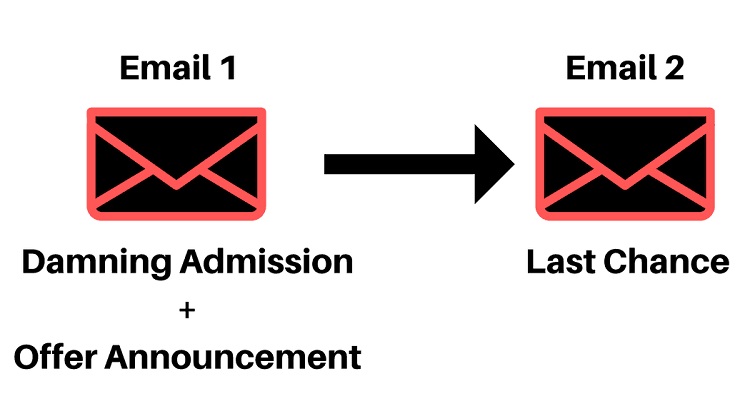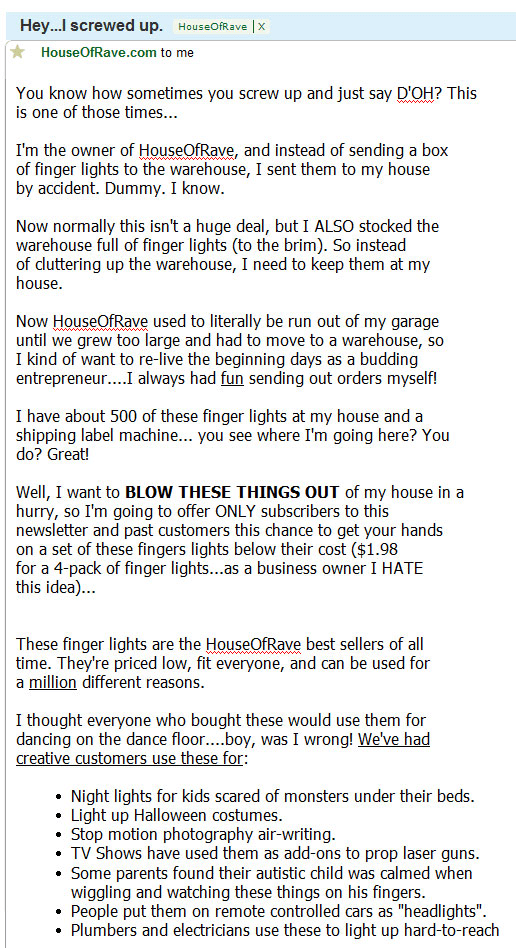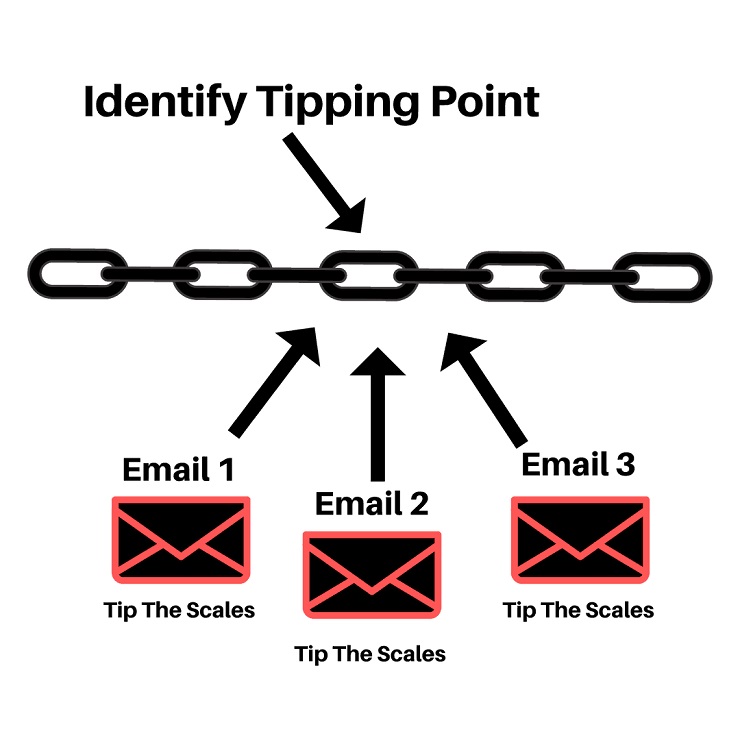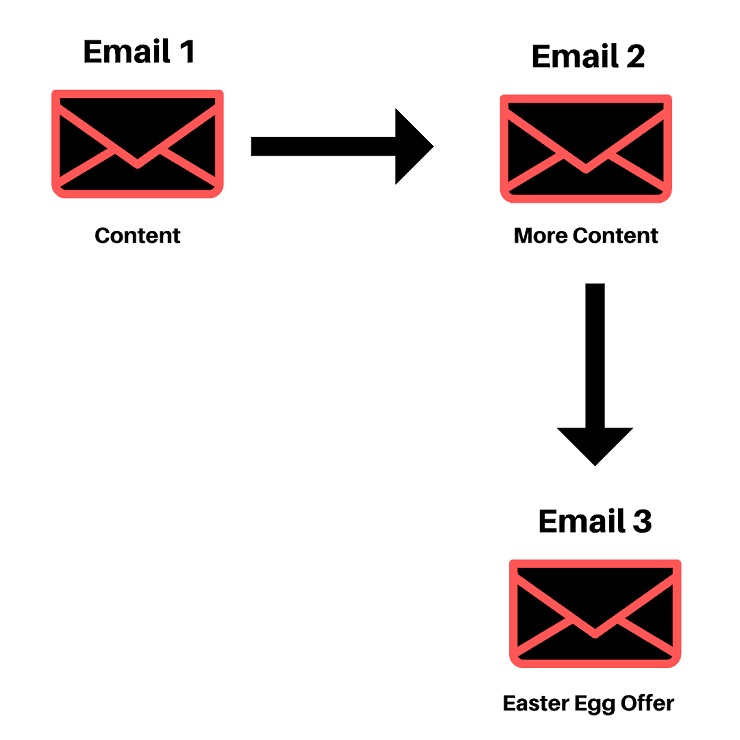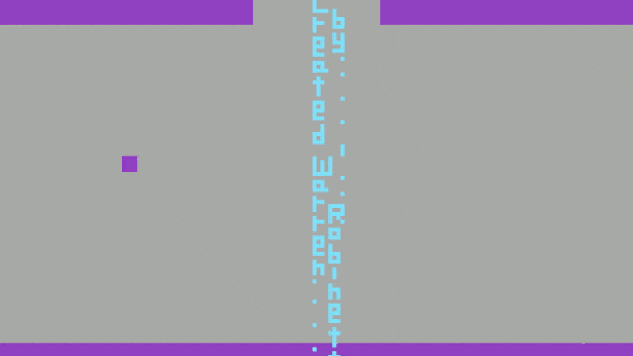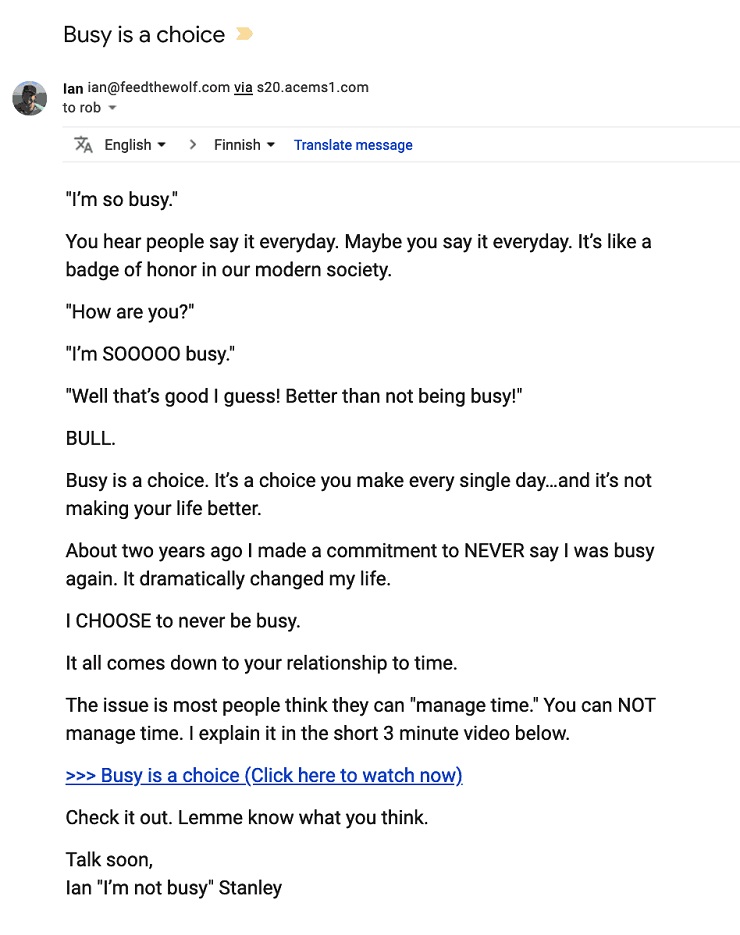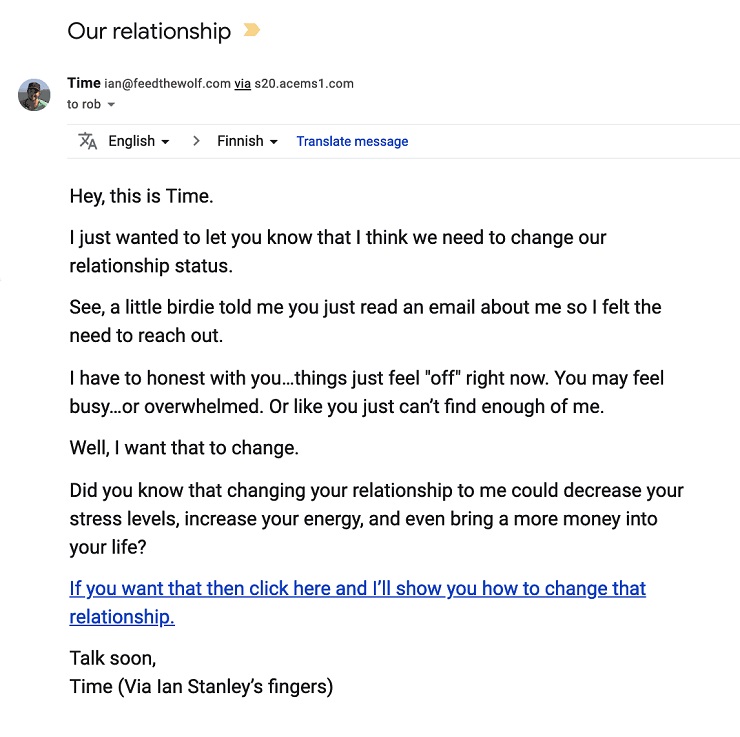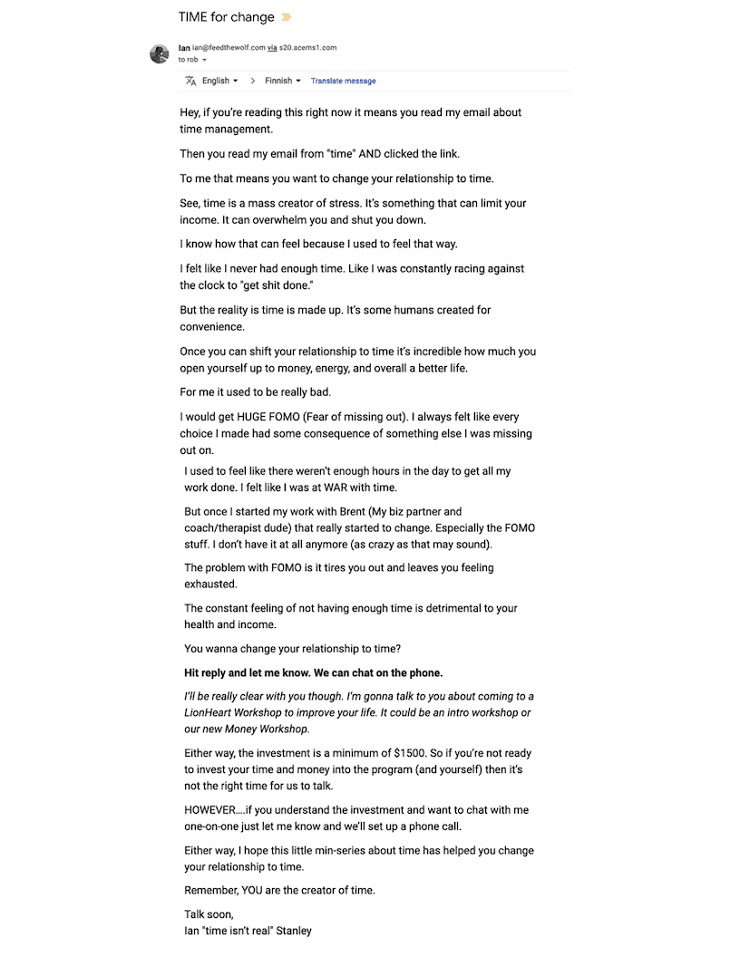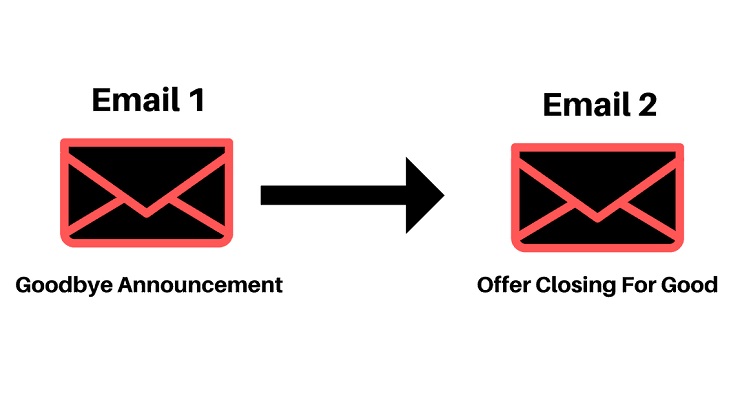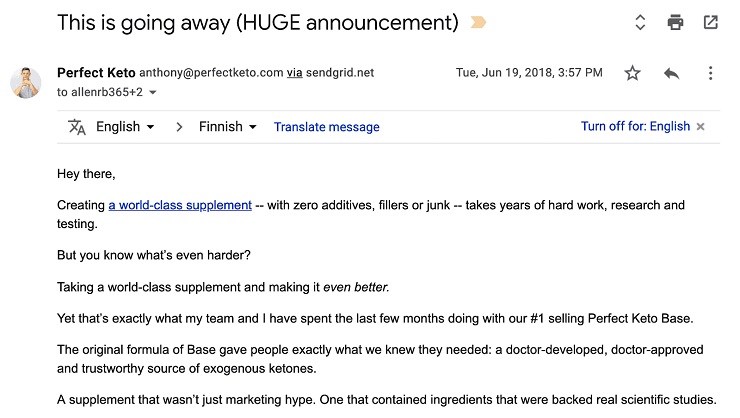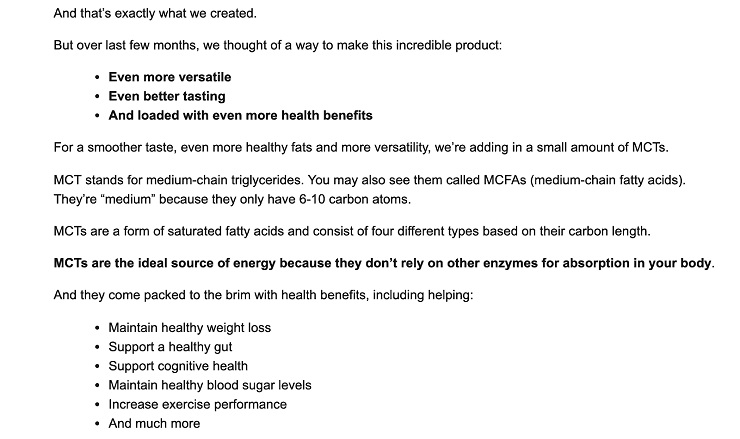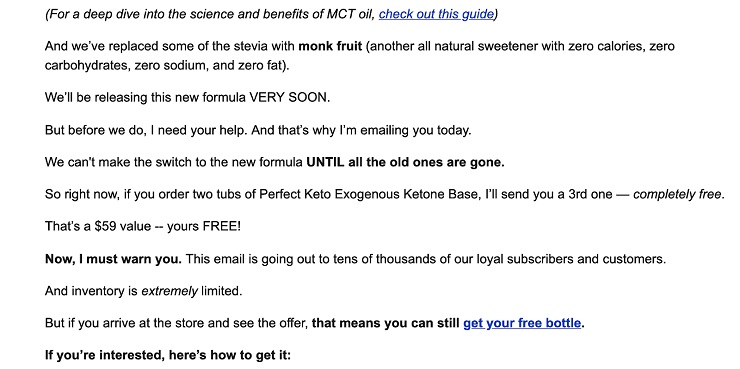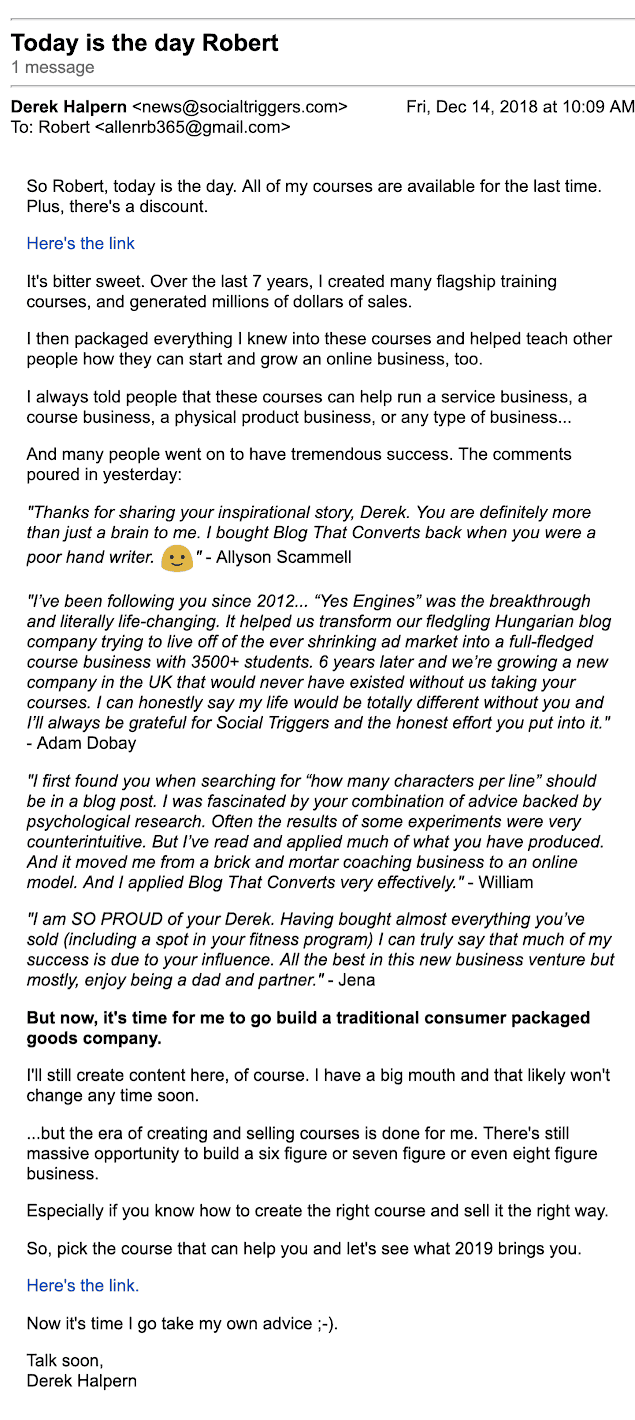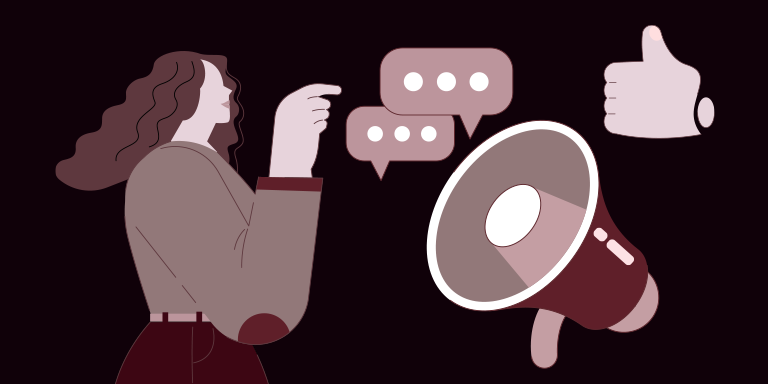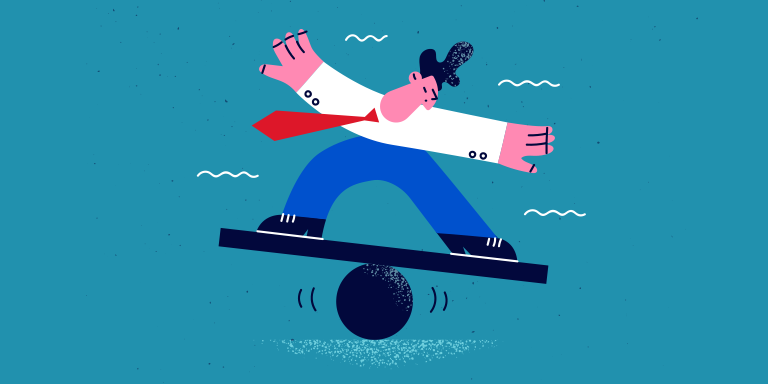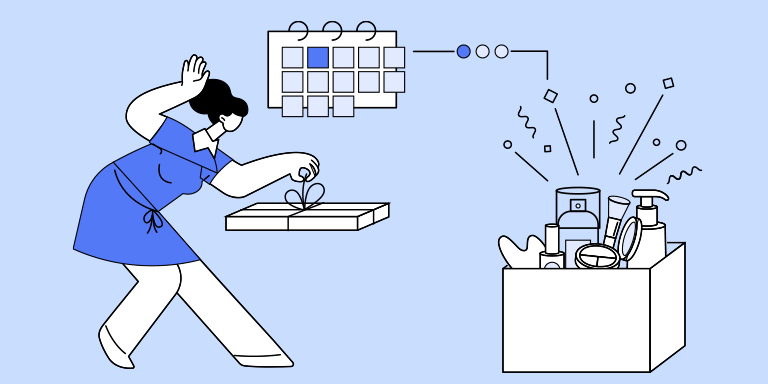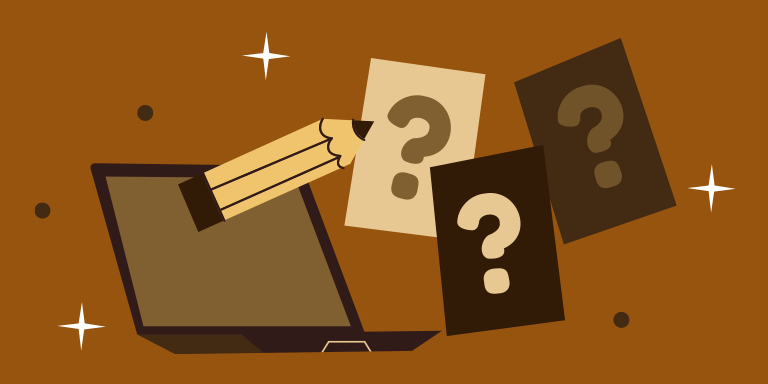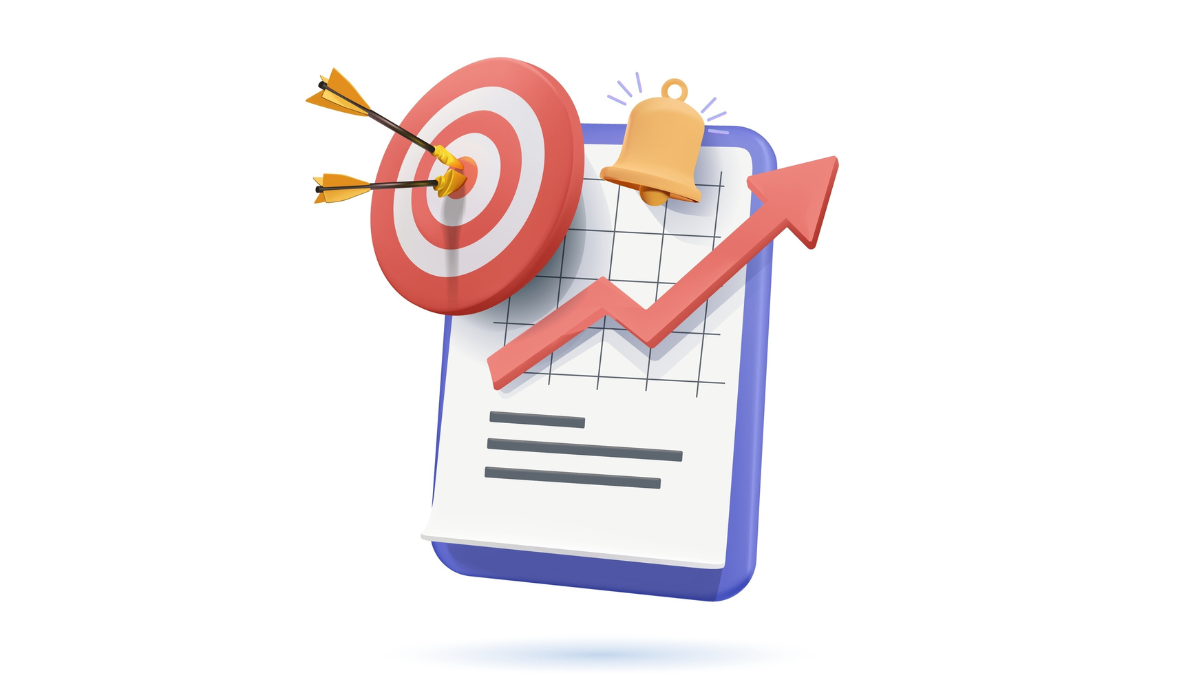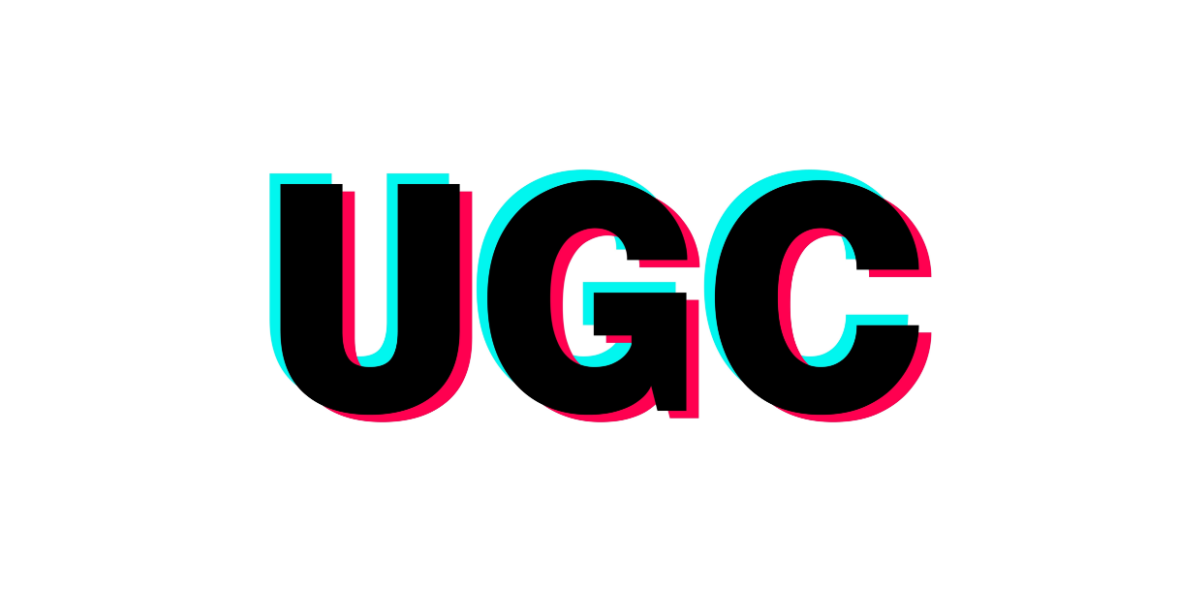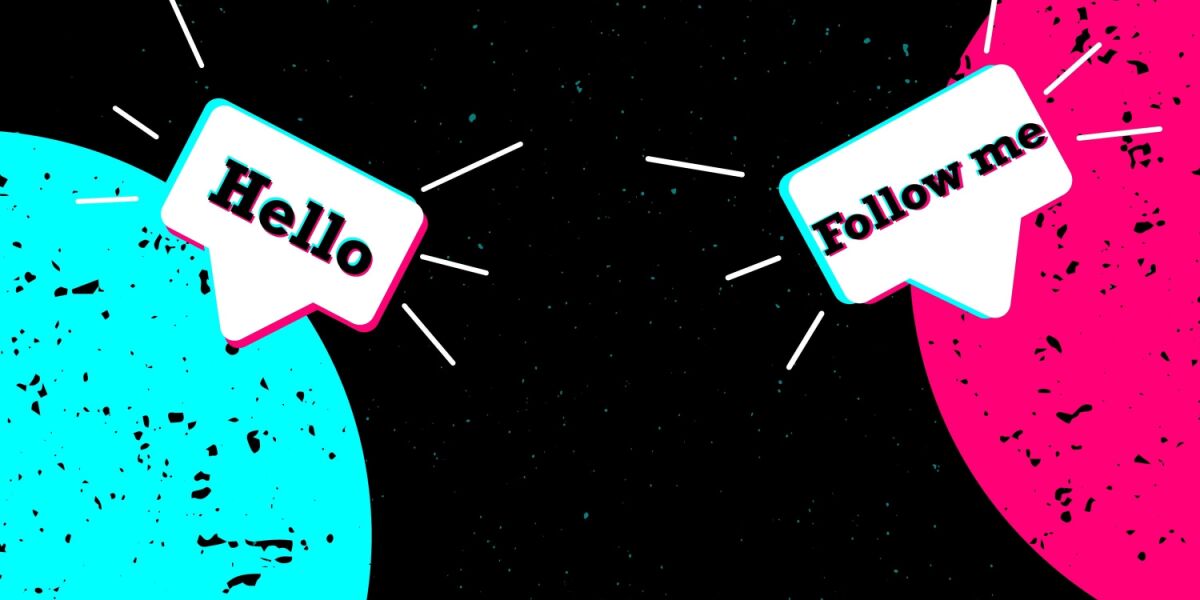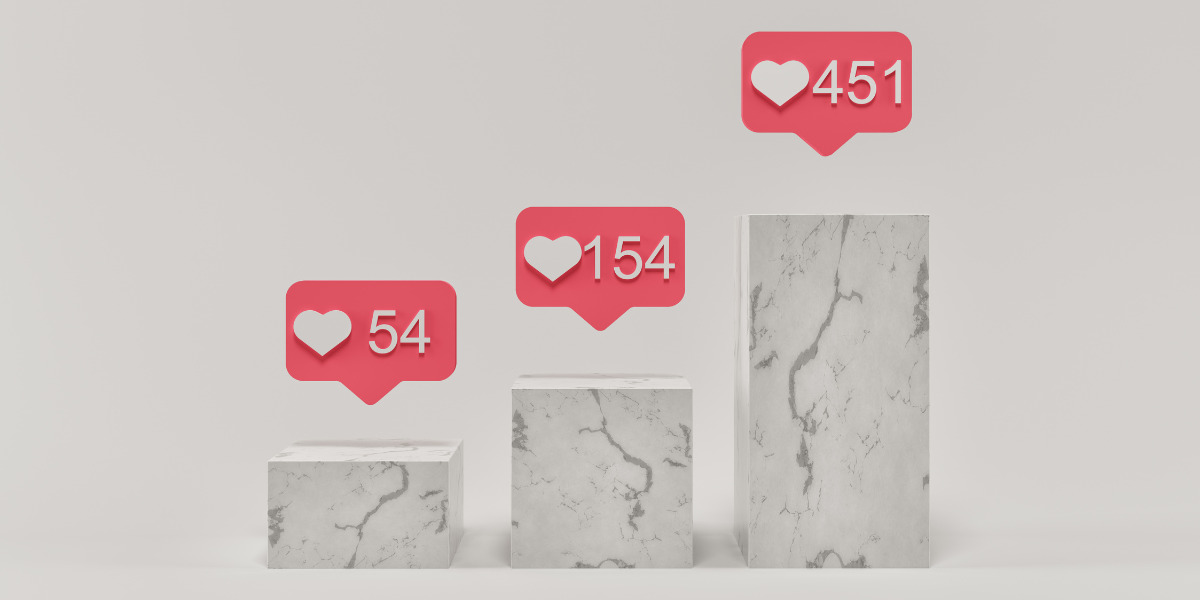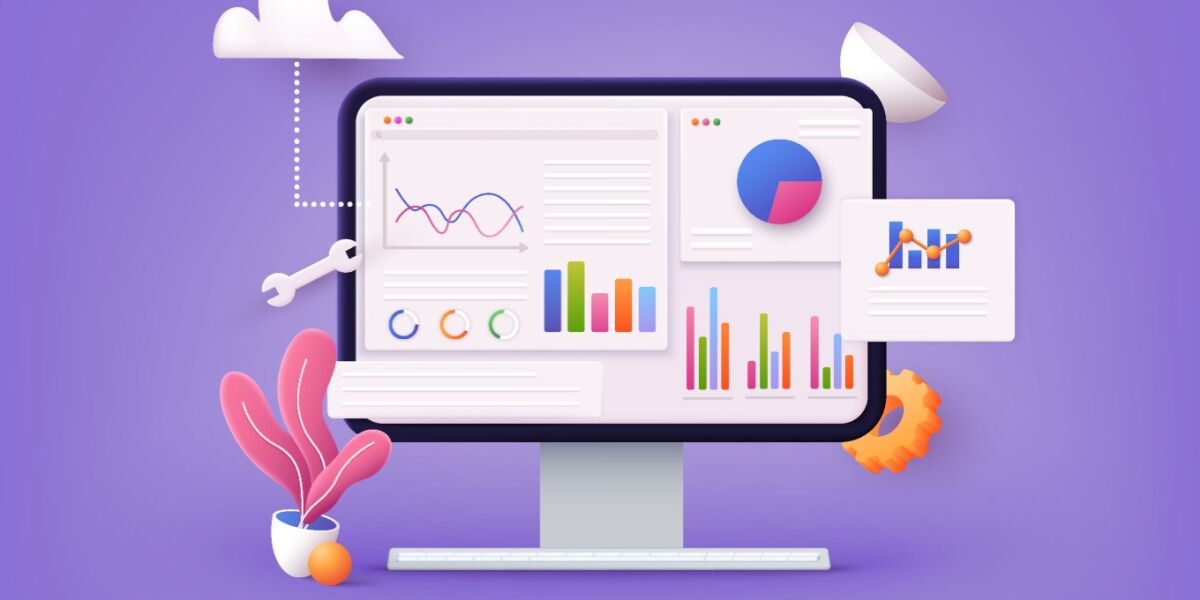Email is powerful. I’ve seen what it can do, studied it, bought stuff because of it, and in the past five years, sold over $50 million worth of products online using email funnels.
In my career of writing copy for over a billion emails, I’ve observed how a well-crafted funnel can have customers begging to learn more about your product, generate over $100,000 in a single day, and lead to conversion rates that will have you doing a double take.
In this post, I’m going to walk you through the most powerful email funnel secrets I’ve come across, and used myself, over the years.
I suspect there will be some surprises in the mix. For example, I’ve sent emails about $250 burgers that doubled sales, buried offers behind lots of clicks to generate $10,000, and told people not buy a product, only to close $210,000.
The following examples are actual emails I and other marketers have used to great success, using the exact strategies I would use if you hired me to write copy for your business. You can put these very strategies into action right away.
I present to you 8 email funnels proven to increase conversions and sales.
FREE Masterclass: The Genius “10-Step Copywriting Framework” Behind 11 Different 7-Figure Launches
High-Converting Email Funnels
Email Funnel 1: The Tease-Release Formula
Email Funnel 2: The Anger-Offer Formula
Email Funnel 3: The Exit Package
Email Funnel 4: The Director’s Cut Special Offer
Email Funnel 5: The Damning Admission Funnel
Email Funnel 6: The Tipping Point
Email Funnel 7: The Easter Egg
Email Funnel 8: Goodnight and Goodbye
Email Funnel 1: The Tease-Release Formula
You know the feeling: You’re watching your favorite Netflix show, get to a crazy plot twist, and think, “I have to keep watching.” Then, you look up three hours later and realize you’ve binged half a season.
Why does that happen?
The answer is…
.
.
.
.
.
.
.
.
…curiosity. (See what I did there?)
When there’s a gap between what we know and what we want to find out, it builds desire to get the answer.
You know it works for TV shows and books, so why not use it in your email marketing? Over the years, I’ve refined and tested dozens of approaches to this. But the single best way is what I call a Tease-Release Funnel.
Example Tease-Release Funnel
I used this technique to launch a product for a former health and supplement client of mine, Perfect Keto. For some context, their audience had been begging them to create this product for years.
Where a lot of companies might have approached this launch with a typical, “It’s here!” email, we tried something a little different, as seen below.
First, we teased that something big was coming. We told them the precise time that we would be emailing them with the announcement. Plus, we linked out to an Instagram post where we blurred out the product package.
This piqued people’s interest to the max. Check some of the comments on Instagram:
Here’s the 2-part tease-release email funnel:
Email 1: The Tease
Email 2: The Release
Imagine if you had your fans asking you to sell them. It completely flips the dynamic of most product launches. The result for Perfect Keto was one of their biggest product launches to date.
This formula can work for any niche or product. You just have to be strategic about when you use it.
When to use the tease-release funnel in your business:
- If you have a new product/feature coming out, try teasing the release date. Put timers in your emails, counting down to the date you’re releasing it. You can actually copy the template I used, just change around a few words and watch how much better your launch performs. The subject line: “Watch your inbox for [[[date]]]] 👀” works like clockwork.
- If you have a big announcement like a webinar or event or piece of content, instead of just releasing it, TEASE it first. There’s a reason that movies release trailers teasing out their content months in advance. Treat your webinars, events and big releases the same way.
- If you have a new partner for your product, don’t just announce it. Send an email with their face blurred out, tease a few facts about them and ask people to guess who it is. It turns a routine announcement into something people are eagerly anticipating.
FREE Masterclass: The Genius “10-Step Copywriting Framework” Behind 11 Different 7-Figure Launches
Email Funnel 2: The Anger-Offer Formula
A few weeks ago, I was scrolling through the ClickFunnels Facebook group and I noticed something fascinating. A guy who’d just bought a Clickfunnels product wanted to know if anyone could share a success story. So he drafted up this post:
The post got a tepid response at best. A few likes and 11 comments (mostly from other people just typing “f” to follow the post). After a few hours, he decided to take a different approach.
Look at what happened:
With 424 comments and 80 likes, he was blown away by the response.
What’s the difference?
One of these posts elicits emotion and leads to engagement (the people who love Russell Brunson and Clickfunnels software aren’t going to stand around and let shots be fired like that! Defending him and the tool is a battle cry).
The other sounds boring and is easy to scroll by.
Humans pay more attention to negative information. It’s hardwired into our biology as a survival mechanism. In fact, researchers have tested this and found people respond quicker to negative words than positive ones.
Take note of this, because it’s an important lesson you can apply to your emails.
How? People need to open your emails before they can click through to your offers. And one of the best ways to get people to open is by tapping into strong emotions through what I call the Anger-Offer Formula.
Example of Anger-Offer Funnel
A great example of the Anger-Offer formula was an email I co-wrote with my former boss, Ramit Sethi, about a $250 hamburger.
Click here for the full post: A $250 Hamburger…WTF?!
For his audience (financially savvy readers), the fact that anyone would pay $250 for a hamburger was ridiculous.
We got a crazy open rate and a ton of engagement on that email.
But the real ninja part is what we did in the P.S. Notice that in the bottom, we were teasing content that’s coming out tomorrow (a paid offer for one of Ramit’s courses).
Put another way: People were eagerly waiting on us to send them a sales email and it performed 2x better than a similar promotion for this product.
If you want to boost engagement and get the most number of people paying attention during product launch, this is how you do it.
And notice, you don’t have to use politically polarizing topics or hateful ideas. You just need to choose a subject that you know your audience will feel moved by.
When to use the Anger-Offer Formula in your business:
- If you have a big product launch coming up and want to make sure as many eyeballs as possible see it, using the Anger-Offer formula can be a great way to stand out in your customers inbox before making the offer.
- If you want to engineer interest in a new product, this is a powerful way to do it.
- If you haven’t emailed your list in awhile, the Anger-Offer technique can wake them up so that your pitch stands the best possible chance of succeeding.
Email Funnel 3: The Exit Package
Once a year, Amazon offers its employees $5,000 to leave the company. The workers can take the cash free and clear. There’s just one catch: Those who accept the offer can never work at Amazon again.
Why in the world would they do this?
Turns out Amazon is leveraging a very powerful psychological principle every time they do this. Employees who resist the initial temptation to quit Amazon and walk out with cash may actually feel happier, more fulfilled, and more committed to their jobs by sticking around.
The reason has to do with confirmation bias, or the tendency to search for information that confirms your previous choices. By making the decision to turn down a sizable chunk of money to stay with the job, employees will likely focus on things that back up their decision down the line.
This can be a powerful tool to use in your email marketing, using what I call the Exit Package Funnel.
As marketers, sometimes we try to hide the fact that we’re going to try to sell something. But we’re not fooling anyone. A better approach is to set expectations firmly in the beginning and ask anyone who’s not up for it to leave.
If you plan to email every day, tell them that. If you’re going to unapologetically try to get them to buy your new product, be open about it.
Yes, some people will unsubscribe, but the people who do stick around will make your list a lot healthier, being more committed to their previous decision to do so.
When I see articles that talk about the average open rate being around 20%, I know those people aren’t creating enough Exit Packages. If you do so frequently and strategically, 40-50% opens can become your new normal.
Example Exit Package Email
Here’s a great example of the Exit Package email at work from a legendary a copywriter who’s sold over $100 million worth of products online, Henry Bingaman.
Henry knows his stuff when it comes to selling things online and this is the first email he sends when you join his list. As a result, his list is relatively small, but when he asks them to do things, they perform similar to what a list 10-100x the size might be expected to do.
I’ve used a similar approach with companies I’ve worked for. For example, I wrote this email for Jumpcut on the six types of people who should not join their course. We sold over $210,000 worth of programs in 48 hours.
When to use Exit Package Emails in your business:
- One of the best places to use an email like this is when someone just opts in to your list. It sets expectations around future emails and gets that burst of buy-in.
- If you’re going to be launching a new product and emailing about it, tell people! It helps your opens and the performance of a launch to set expectations before you start sending a ton of emails about it. During a recent launch for Jumpcut, we told people in the emails:
Engagement stayed high throughout the entire campaign and we did over half a million dollars in sales.
- If people are not engaging with your content after a while, asking them to unsubscribe can be a powerful strategy for reigniting the leads and monetizing them. A while back, Unbounce shared an interesting case study on how you can actually increase engagement and sales by emailing unengaged people and asking them to leave.
Email Funnel 4: The Director’s Cut Special Offer
Why do people stay all the way to the end of the movie just to see outtakes? We love going behind the scenes. It’s like having a little secret between you and the filmmakers. It creates intimacy, loyalty and a larger, more engaged fan base.
It can also play a powerful role in your email marketing strategy. I do it by using what I call Director’s Cut Special Offers.
Example Director’s Cut Special Offer
I recently used this technique during a launch for Jumpcut. At the time, we were planning to open up one of their bestselling courses to kick off the New Year.
We were doing a final check on the launch, when we noticed a big, gaping hole in our plan. For the launch, we would only be marketing to people who’d never bought from us before. That meant for 13,000 customers (the people who’d already taken out their wallets and given us money), we were just going to leave them in the dark for a month.
It would’ve been a huge mistake. But thankfully we had the Director’s Cut Special Offer formula to fall back on.
All it took was a short, six-part “behind-the-scenes” email series where we showed customers the inner-workings of this launch. We told them about our strategy behind emails that other readers (the non-buyers) were getting, shared open rates for the emails, and even told them about sales numbers for the other course.
Check Out The Funnel Right Here, For Free
At the end, we made an offer to this group to join one of our other courses on starting and growing an online business.
This little email series brought in an additional $64,000. That’s over $10,000 per email and didn’t take much effort on our part.
Of course, every niche and product is different, but when it comes to creating behind-the-scenes content for your customers, it can be a powerful way to boost engagement and grow sales.
When to use Director’s Cut Special Offers in your business:
If you’re are making an offer to an established customer, showing them the inner-workings of the product or giving them exclusive access to behind-the-scenes material can be a powerful way to create more trust and intimacy. Note: This can be simple plain text emails. For Jumpcut, we sold a $1,000 product with just a couple emails to a small list of 13,000.
FREE Masterclass: The Genius “10-Step Copywriting Framework” Behind 11 Different 7-Figure Launches
Email Funnel 5: The Damning Admission Funnel
Andrew Warner is one of my favorite podcast hosts of all time. On his show “mixergy,” he poses fascinating questions and presses his guests hard to share real numbers and tactics.
A while back, he was interviewing Robert Cialdini about his new book Pre-suasion and asked a question about why Warren Buffett goes on stage at his company’s annual meeting and talks negatively about his company.
Andrew: You know why he does that. Why did he do that, Robert?
Robert: His company is based on trustworthiness. That is, they don’t make a product. They don’t manufacture anything. They’re a holding company. They invest in other companies, and they ask us to invest in Berkshire Hathaway. All they have is trust.
And one way it’s possible to engender trust is to honestly admit to weaknesses. It establishes you persuasively as an honest and reliable trustworthy source of information. Once you’ve established that, now when you present the strengths of your case, people listen more deeply. They process the information more fully, and they believe it to a greater extent.
In other words, one of the most persuasive tools marketers have in their toolbelts is to not hide the flaws, but expose them.
You can do just that through a Damning Admission email.
Example Damning Admission Funnel
A great example of a Damning Admission Email at work is Neville Medhora’s famous HouseofRave “Hey…I screwed up” sale, seen here:
Notice Neville points out the mistake he made (sending the product to his house), calls himself a “dummy” and admits that he was “wrong” about how people use these finger lights.
Putting all these flaws in an email breaks every rule in the marketing playbook. “What about the benefits and the great product!?”
According to Nevill, “My previous emails made 0 sales. This properly written email made 120 sales in two hours!” You can’t even do a percent increase because it was so exponentially more effective!
You can use this in your business, too. You just need to focus on being honest and transparent.
When to use a Damning Admission Funnel in your business:
- If you bought too much of a product or have a lot of inventory sitting around you need to sell, admitting your mistake can be amazing. I used this technique with a client and we sold hundreds of thousands of dollars worth of collagen in days.
- You can also use this framework if you’re making a change to a product and want to sell through the old ones before they’re all gone. Just admit that you have too much inventory on hand and need to get rid of it.
- If you made any other kind of mistake with a product—have a delay, mislabeled it, etc.
Email Funnel 6: The Tipping Point
One of my favorite quotes of all time is: “No snowflake in an avalanche ever feels responsible. But one definitely did tip the scales and send the snow down the mountainside.”
I like this quote because it points out an important truth about life: You can trace back any big change to one moment, one precise change in time. Boiling water is stable until 211 degrees, then the scales are tipped and it’s boiling.
These tipping points exist everywhere and can work wonders in your email funnels. You find the point that “tips” things for your customers, and then optimize your email funnels around that point.
That’s why I call it a Tipping Point Funnel. Here’s an example of how it works.
Example Tipping Point Funnel
My friend Preston Millo has a course on helping people start a blog.
Now, he knows that most people who sign up for this program will not take action. But if someone is going to find success, the most important step in that process is actually signing up for a blog-hosting service. Without a blog hosting service, they won’t have a domain or hosting platform. And without that, they don’t have a blog.
He could just keep chugging along in his training, showing people how to do advanced things with their blog. That’s the approach most people take (and why course completion rates are so low).
But he knows there’s one step that acts like a domino to everything else: setting up hosting. So he optimizes his emails around that fact and tries to tip the scales in his students favor so they find success.
Check this out:
Notice that he offers to send people $5 via PayPal if they prove they signed up for Bluehost. In the grand scheme of things, $5 is nothing because he makes 10x that back from referring people to Bluehost.
But more importantly for him, he went from having few or zero people actually taking action to converting 6.6% of people who went through this series.
When to use the Tipping Point Funnel in your marketing:
- When there are multiple steps your customer needs to take to be successful, try identifying the key one and reward them for that. How could you incentivize that? Could you send a cash reward or gift like Preston does?
- If retention plays a big role in your business, could you build a series of emails that highly incentivize them to take a key step? Maybe it’s actually downloading and using *the thing*. Whatever it is for your business, consider building out a little micro series like Preston’s to incentivize this action.
Email Funnel 7: The Easter Egg
In 1979, video game developer Warren Robinett was feeling underpaid and underappreciated for his work. So he hatched a plan to get the credit he deserved. His idea? Hide his name inside the game.
In the game, if you made it to a secret room, the screen filled up with a flashing movie marquee that said, “Created by Warren Robinett.”
No one knew about this secret feature until a 15-year-old boy in Salt Lake City found out about it. And once word got out, it spread like wildfire. Fans hunted down the secret room in droves, likening it to hunting easter eggs. The name stuck, and these hidden features have become staples in video games ever since.
Easter eggs can also be a powerful tool in your email marketing, too.
One of the simplest ways to include “easter eggs” in your emails is by sending a reward, perk, or special offer to subscribers who take certain actions.
That’s what Ian Stanley, the guy many call The King of Email, did in his funnel to sell seats to his LionHeart Workshop series. Here’s how the funnel played out:
Example Easter Egg Funnel
Ian started his Easter Egg Funnel by delivering an amazing piece of content to his followers about time management.
After you engaged with that first email, things got interesting. Anyone who clicked the link that email got a follow up message:
Notice how Ian calls attention to the fact that they are receiving this follow up for because they read the earlier one: “A little birdie told me you just read an email about me so I felt the need to reach out.”
In this email, Ian delivered another piece of content, going even deeper on time management. If you clicked that email, you received a final follow up. This time with an offer inside.
Notice how Ian frames this final email: “if you’re reading this right now it means you read my email about time management. Then you read my email from ‘time’ AND clicked the link.”
It feels exclusive. It’s something he’s only offering to his most engaged subscribers. And he’s also giving you the chance to hop on the phone with him to discuss getting signed up for his workshop.
Imagine being a fan of Ian’s and then getting this follow up? Even if you weren’t considering joining a $5,000+ workshop, you might be nudged ever so slightly to get started, or at least jump on the phone with Ian to talk about it.
This approach works wonders for conversion rates. Ian grew LionHeart to seven figures in under a year primarily through email. And a huge part of that growth is because he’s constantly burying little easter eggs like this for his most engaged readers.
I modeled Ian’s approach recently to sell tickets to a $10,000 mastermind. Suffice it to say, this is powerful stuff. Instead of sending your offer to everyone, you’re only sending it to the people who engaged with the previous step in the funnel.
This makes some marketers nervous. “What if people don’t see my offer!?”
But don’t fret. The truth is, tailoring your message can actually lead to better performance. People using behaviorally triggered emails (like clicking within an Easter Egg Funnel) see up to 60% higher conversions than mass marketing emails.
When to use The Easter Egg Funnel in your business:
- If you have offers that are best suited for a specific segment of your audience, narrow down that audience by burying an easter egg at the end of the series for those who take certain actions.
- If you want to test out a new product for a small group of your most engaged fans, Easter Egg Funnels can be a great way to get a small group of beta testers to try it out. And because their engagement is higher, they’ll be a great group to get feedback from before taking it to mass market.
- If you have a high-ticket offer ($2,000-$10,000) but don’t have a phone sales team, burying easter egg offers for those most engaged prospects can be a great way to close sales.
- If you’re sending prospects to a sales page, your easter egg can be a simple email saying, “Hey, I noticed you checked out my [[insert product]] but have yet to try it out. Totally cool. But if you don’t mind sharing, which of these reasons best describes why not?
- Money/Costs
- Time/Too Busy
- Trust/I don’t know you well enough
- I’m not sure this will work for me
You then follow up with a message that specifically answers those objections. Instead of feeling like a blanket message to everyone, it will feel exclusive to that person and convert a whole lot better.
Email Funnel 8: Goodnight and Goodbye
When the New York Yankees decided to build a new stadium in 2009, one man was willing to pay $18.5 million for the remains.
His plan? Take the stadium’s old seats, restroom signs, and even dirt to sell as memorabilia to fans. What most people thought was a crazy idea turned into a business that does over $50 million per year in sales.
For fans, the idea of losing a product forever can be painful.
This is called loss aversion, an idea put forward by Nobel Prize-winner Daniel Kahneman, where people fear loss twice as much as they desire gain. In other words, say your product is going away forever, and prepare for a flood of orders.
When you do this through email, I call it the Goodnight and Goodbye Funnel.
Example Goodnight and Goodbye Funnel
This technique has been worth millions to the businesses I’ve used it with. Here’s how it works.
You first create an email telling people that a product is going away or a big change is coming. In that email, you announce a sale with a deadline. You then follow up a couple times before the deadline is up (or you run out of the product). Here’s example of an email I wrote for a supplement company talking about a change to one of their top products.
We told people very clearly that this product was going to be updated and these older editions were going away. But before we made the switch, we needed to sell these remaining tubs to fans.
The result was we sold almost 13,000 tubs in days. This was an 37x spike in daily sales for this product and it’s all because we closed it out with a Goodnight and Goodbye Funnel.
Derek Halpern also recently used this approach to announce the fact that he was going to be shutting down his online course business and focus on his new company, Truvani.
He sent an email announcing that he was quitting. But before he closed up shop, he was going to offer his courses at a great price one more time.
I don’t know the specifics of Derek’s situation, but my guess is this campaign was worth a lot to his business.
When to use Goodnight and Goodbye Funnels in your business:
- If you’re planning to make a change to a product, don’t just make the switch. If it’s a physical good (like a supplement), sell final additions of the old one. If it’s digital, tell them to get it now and get the update at no additional charge.
- If you’re discontinuing a product, give fans one last chance to get it (at a discount).
- If you sell a software and need to drum up a lot of sales at once (for the cash), create an offer for a lifetime deal and tell people that plan is going away forever.
FREE Masterclass: The Genius “10-Step Copywriting Framework” Behind 11 Different 7-Figure Launches
Are You Ready?
Are you ready to put these funnels to work in your business? Leave a comment below to let us know what you think of these email funnels, or if you have any questions about how it all works!

